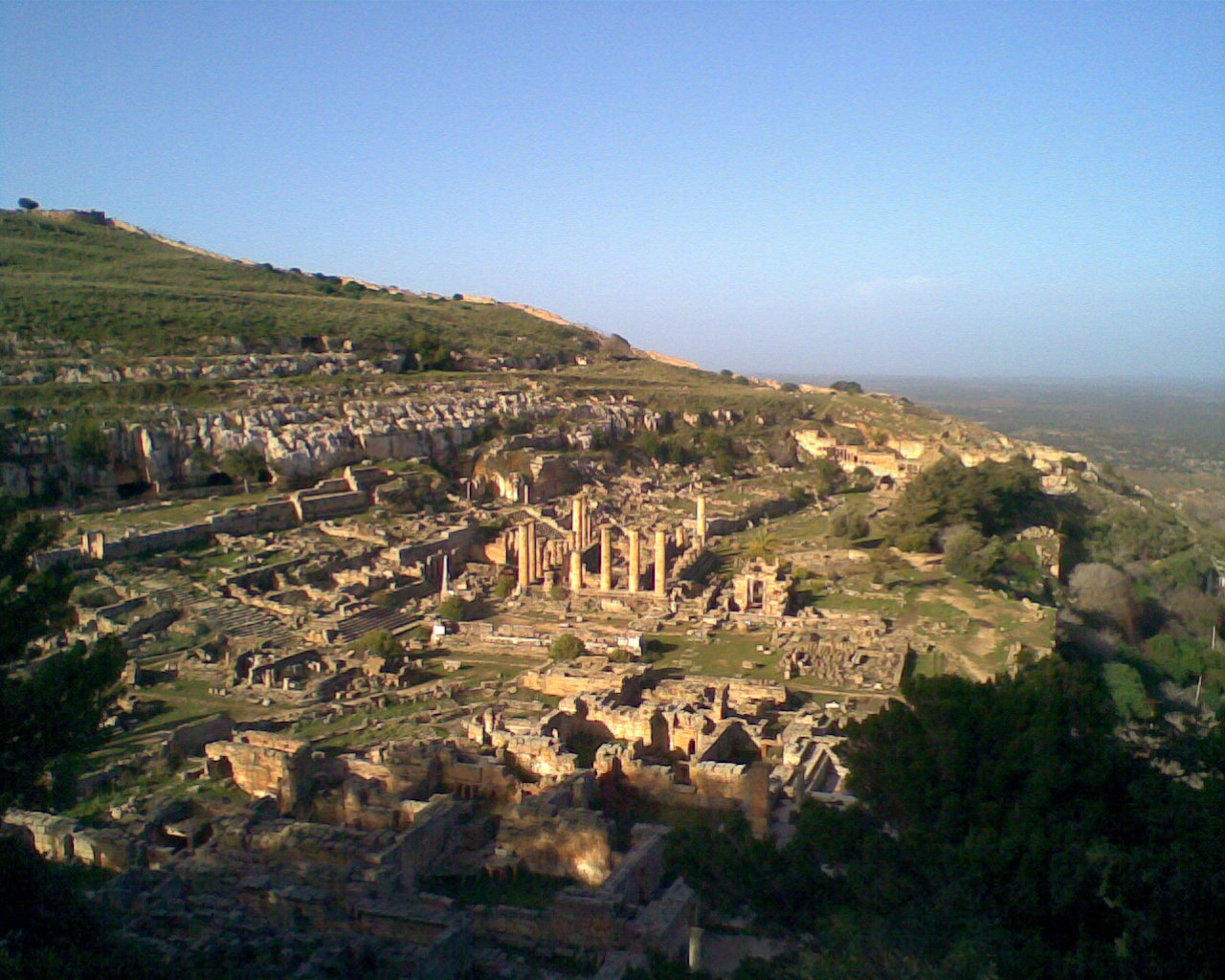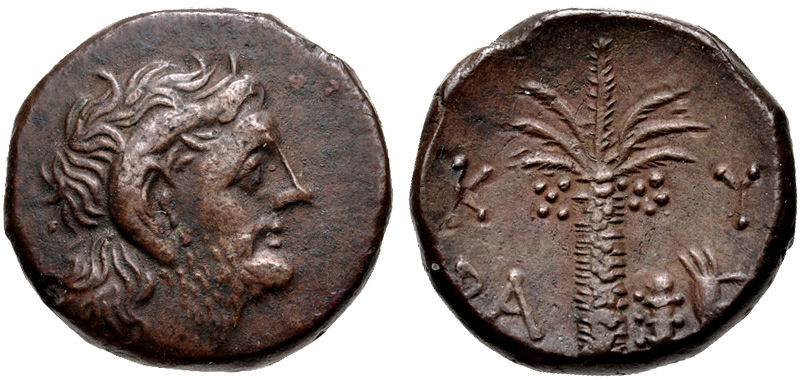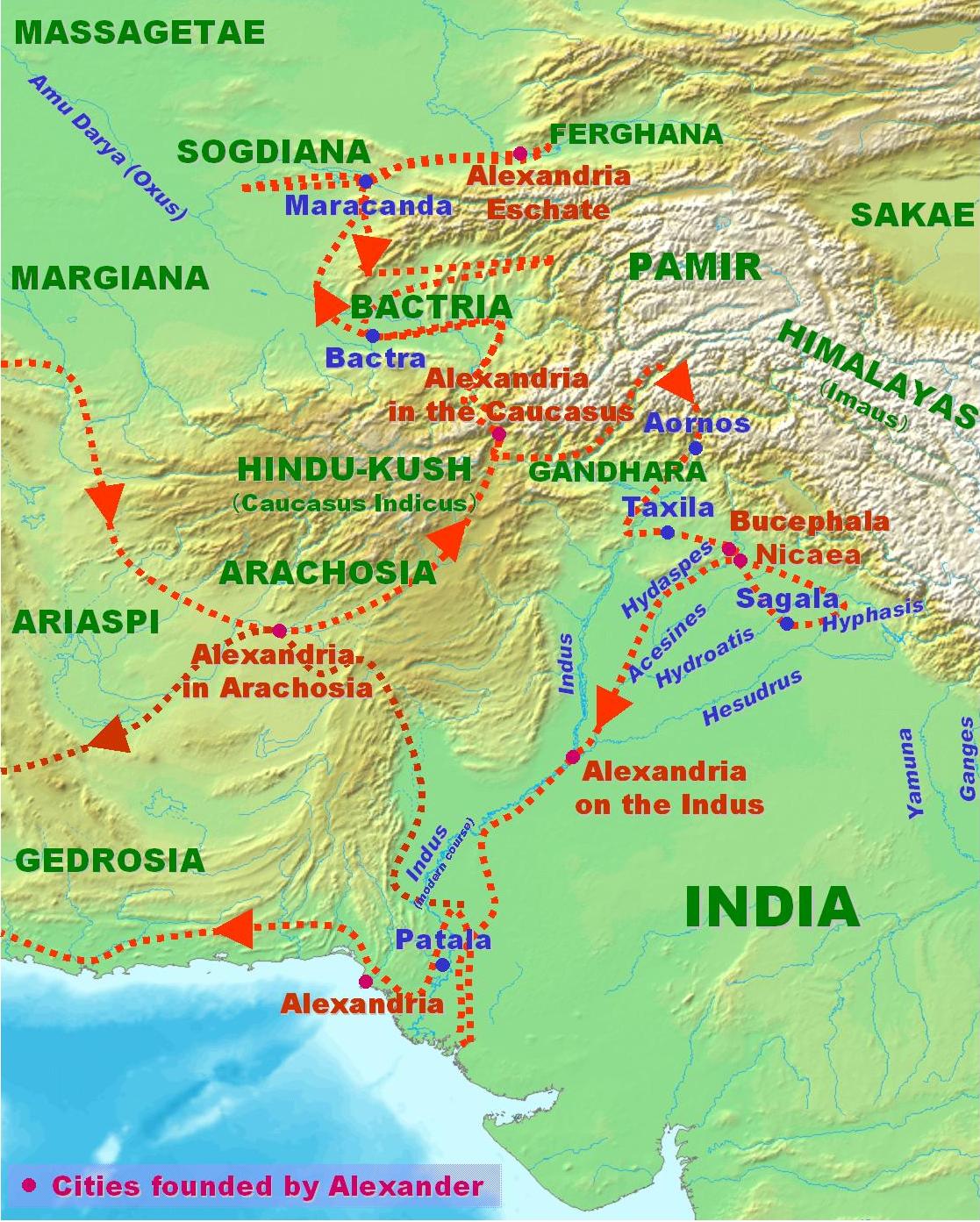|
Hegesias Of Cyrene
Hegesias ( el, Ἡγησίας; fl. 290 BC) of Cyrene was a Cyrenaic philosopher. He argued that eudaimonia (happiness) is impossible to achieve, and that the goal of life should be the avoidance of pain and sorrow. Conventional values such as wealth, poverty, freedom, and slavery are all indifferent and produce no more pleasure than pain. Cicero claims that Hegesias wrote a book called ἀποκαρτερῶν (''Death by Starvation''), which persuaded so many people that death is more desirable than life that Hegesias was banned from teaching in Alexandria. It has been thought by some that Hegesias was influenced by Buddhist teachings. Life Diogenes Laërtius describes Hegesias as the pupil of Paraebates, who was a pupil of Epitimedes, who was a pupil of Antipater of Cyrene, who was a pupil of Aristippus (c. 435 – c. 360 BC). He was the fellow-student of Anniceris, but he differed from Anniceris by presenting the system which Anniceris softened and improved in its mos ... [...More Info...] [...Related Items...] OR: [Wikipedia] [Google] [Baidu] |
Tusculanae Quaestiones
The ''Tusculanae Disputationes'' (also ''Tusculanae Quaestiones''; English: ''Tusculan Disputations'') is a series of five books written by Cicero, around 45 BC, attempting to popularise Greek philosophy in Ancient Rome, including Stoicism. It is so called as it was reportedly written at his villa in Tusculum. His daughter had recently died and in mourning Cicero devoted himself to philosophical studies. The ''Tusculan Disputations'' consist of five books, each on a particular theme: On the contempt of death; On pain; On grief; On emotional disturbances; and whether Virtue alone is sufficient for a happy life. Context In the year 45 BC, when Cicero was around 61 years of age, his daughter, Tullia, died following childbirth. Her loss afflicted Cicero to such a degree that he abandoned all public business and left the city retiring to Asterra, which was a country house that he had near Antium. There he devoted himself to philosophical studies, writing several works, including ''De fi ... [...More Info...] [...Related Items...] OR: [Wikipedia] [Google] [Baidu] |
Dharma
Dharma (; sa, धर्म, dharma, ; pi, dhamma, italic=yes) is a key concept with multiple meanings in Indian religions, such as Hinduism, Buddhism, Jainism, Sikhism and others. Although there is no direct single-word translation for ''dharma'' in European languages, it is commonly translated as "righteousness", "merit" or "religious and moral duties" governing individual conduct.Britannica, The Editors of Encyclopaedia. (9 April 2019)Dharma. ''Encyclopedia Britannica''. Accessed 14 September 2021. In Hinduism, dharma is one of the four components of the ''Puruṣārtha'', the aims of life, and signifies behaviours that are considered to be in accord with '' Ṛta'', the order that makes life and universe possible. It includes duties, rights, laws, conduct, virtues and "right way of living".see: *"Dharma", ''The Columbia Encyclopedia'', 6th Ed. (2013), Columbia University Press, Gale, ; *Steven Rosen (2006), Essential Hinduism, Praeger, , Chapter 3. It had a transtempor ... [...More Info...] [...Related Items...] OR: [Wikipedia] [Google] [Baidu] |
Edicts Of Ashoka
The Edicts of Ashoka are a collection of more than thirty inscriptions on the Pillars of Ashoka, as well as boulders and cave walls, attributed to Emperor Ashoka of the Maurya Empire who reigned from 268 BCE to 232 BCE. Ashoka used the expression ''Dhaṃma Lipi'' (Prakrit in the Brahmi script: 𑀥𑀁𑀫𑀮𑀺𑀧𑀺, "Inscriptions of the Dharma") to describe his own Edicts. These inscriptions were dispersed throughout the areas of modern-day Bangladesh, India, Nepal, Afghanistan and Pakistan, and provide the first tangible evidence of Buddhism. The edicts describe in detail Ashoka's view on dhamma, an earnest attempt to solve some of the problems that a complex society faced. According to the edicts, the extent of Buddhist proselytism during this period reached as far as the Mediterranean, and many Buddhist monuments were created. These inscriptions proclaim Ashoka's adherence to the Buddhist philosophy. The inscriptions show his efforts to develop the Buddhist dhamm ... [...More Info...] [...Related Items...] OR: [Wikipedia] [Google] [Baidu] |
Ashoka
Ashoka (, ; also ''Asoka''; 304 – 232 BCE), popularly known as Ashoka the Great, was the third emperor of the Maurya Empire of Indian subcontinent during to 232 BCE. His empire covered a large part of the Indian subcontinent, stretching from present-day Afghanistan in the west to present-day Bangladesh in the east, with its capital at Pataliputra. A patron of Buddhism, he is credited with playing an important role in the spread of Buddhism across ancient Asia. Much of the information about Ashoka comes from his Brahmi edicts, which are among the earliest long inscriptions of ancient India, and the Buddhist legends written centuries after his death. Ashoka was son of Bindusara, and a grandson of the dynasty's founder Chandragupta. During his father's reign, he served as the governor of Ujjain in central India. According to some Buddhist legends, he also suppressed a revolt in Takshashila as a prince, and after his father's death, killed his brothers to ascend ... [...More Info...] [...Related Items...] OR: [Wikipedia] [Google] [Baidu] |
Egypt
Egypt ( ar, مصر , ), officially the Arab Republic of Egypt, is a transcontinental country spanning the northeast corner of Africa and southwest corner of Asia via a land bridge formed by the Sinai Peninsula. It is bordered by the Mediterranean Sea to the north, the Gaza Strip of Palestine and Israel to the northeast, the Red Sea to the east, Sudan to the south, and Libya to the west. The Gulf of Aqaba in the northeast separates Egypt from Jordan and Saudi Arabia. Cairo is the capital and largest city of Egypt, while Alexandria, the second-largest city, is an important industrial and tourist hub at the Mediterranean coast. At approximately 100 million inhabitants, Egypt is the 14th-most populated country in the world. Egypt has one of the longest histories of any country, tracing its heritage along the Nile Delta back to the 6th–4th millennia BCE. Considered a cradle of civilisation, Ancient Egypt saw some of the earliest developments of writing, agriculture, ur ... [...More Info...] [...Related Items...] OR: [Wikipedia] [Google] [Baidu] |
Ptolemaic Dynasty
The Ptolemaic dynasty (; grc, Πτολεμαῖοι, ''Ptolemaioi''), sometimes referred to as the Lagid dynasty (Λαγίδαι, ''Lagidae;'' after Ptolemy I's father, Lagus), was a Macedonian Greek royal dynasty which ruled the Ptolemaic Kingdom in Ancient Egypt during the Hellenistic period. Their rule lasted for 275 years, from 305 to 30 BC. The Ptolemaic was the last dynasty of ancient Egypt. Ptolemy, one of the seven somatophylakes (bodyguard companions), a general and possible half-brother of Alexander the Great, was appointed satrap of Egypt after Alexander's death in 323 BC. In 305 BC, he declared himself Pharaoh Ptolemy I, later known as ''Sōter'' "Saviour". The Egyptians soon accepted the Ptolemies as the successors to the pharaohs of independent Egypt. Ptolemy's family ruled Egypt until the Roman conquest of 30 BC. Like the earlier dynasties of ancient Egypt, the Ptolemaic dynasty practiced inbreeding including sibling marriage, but this did not start ... [...More Info...] [...Related Items...] OR: [Wikipedia] [Google] [Baidu] |
Magas Of Cyrene
Magas of Cyrene ( el, Μάγας ὁ Κυρηναῖος; born before 317 BC – 250 BC, ruled 276 BC – 250 BC) was a Greek King of Cyrenaica. Through his mother’s second marriage to Ptolemy I he became a member of the Ptolemaic dynasty. He managed to wrest independence for Cyrenaica (in modern Libya) from the Greek Ptolemaic dynasty of Ancient Egypt, and became King of Cyrenaica from 276 BC to 250 BC. Family background and early life Magas was the first-born son of the noblewoman Berenice I and her first husband Philip, who had served as a military officer in the campaigns of Alexander the Great. He had two younger sisters: Antigone of Epirus and Theoxena of Syracuse. His father, Philip was the son of Amyntas by an unnamed mother. Plutarch (Pyrrhus 4.4) implies that his father was previously married and had children, including daughters born to him. Phillip served as a military officer in the service of the Macedonian king Alexander the Great and was known for commanding one ... [...More Info...] [...Related Items...] OR: [Wikipedia] [Google] [Baidu] |
Ophellas
Ophellas or Ophelas ( fl. c. 350 – 308 BC) was an Ancient Macedonian soldier and politician. Born in Pella in Macedonia, he was a member of the expeditionary army of Alexander the Great in Asia, and later acted as Ptolemaic governor of Cyrene. His father's name was Seilenus. India Ophellas's name is first mentioned as a trierarch (commander of a trireme) of the fleet of Alexander the Great on the Indus in 326 BC. Cyrenaica governor (322-c. 308) After the death of Alexander, he followed the fortunes of Ptolemy I Soter, by whom he was sent, in 322 BC, at the head of a considerable army, to take advantage of the civil war which had broken out in Cyrenaica. This he successfully accomplished. Having totally defeated Thimbron and the party that supported him, he helped establish Ptolemaic control over Cyrene itself and its dependencies. The character of the new pro-Ptolemaic regime at Cyrene is illuminated by a lengthy constitutional document from Cyrene, preserved on stone, wh ... [...More Info...] [...Related Items...] OR: [Wikipedia] [Google] [Baidu] |
Buddhism
Buddhism ( , ), also known as Buddha Dharma and Dharmavinaya (), is an Indian religion or philosophical tradition based on teachings attributed to the Buddha. It originated in northern India as a -movement in the 5th century BCE, and gradually spread throughout much of Asia via the Silk Road. It is the world's fourth-largest religion, with over 520 million followers (Buddhists) who comprise seven percent of the global population. The Buddha taught the Middle Way, a path of spiritual development that avoids both extreme asceticism and hedonism. It aims at liberation from clinging and craving to things which are impermanent (), incapable of satisfying ('), and without a lasting essence (), ending the cycle of death and rebirth (). A summary of this path is expressed in the Noble Eightfold Path, a training of the mind with observance of Buddhist ethics and meditation. Other widely observed practices include: monasticism; " taking refuge" in the Buddha, the , and the ; ... [...More Info...] [...Related Items...] OR: [Wikipedia] [Google] [Baidu] |
Epicureanism
Epicureanism is a system of philosophy founded around 307 BC based upon the teachings of the ancient Greek philosopher Epicurus. Epicureanism was originally a challenge to Platonism. Later its main opponent became Stoicism. Few writings by Epicurus have survived. However, there are independent attestations of his ideas from his later disciples. Some scholars consider the epic poem ''De rerum natura'' (Latin for ''On the Nature of Things'') by Lucretius to present in one unified work the core arguments and theories of Epicureanism. Many of the scrolls unearthed at the Villa of the Papyri at Herculaneum are Epicurean texts. At least some are thought to have belonged to the Epicurean philosopher Philodemus. Epicurus also had a wealthy 2nd-century AD disciple, Diogenes of Oenoanda, who had a portico wall inscribed with tenets of the philosophy erected in Oenoanda, Lycia (present day Turkey). Epicurus was an atomic materialist, following in the steps of Democritus. His materialis ... [...More Info...] [...Related Items...] OR: [Wikipedia] [Google] [Baidu] |
Pyrrhonism
Pyrrhonism is a school of philosophical skepticism founded by Pyrrho in the fourth century BCE. It is best known through the surviving works of Sextus Empiricus, writing in the late second century or early third century CE. History Pyrrho of Elis (c. 360 – c. 270 BCE) and his teacher Anaxarchus, both Democritus, Democritean philosophers, Indian campaign of Alexander the Great, traveled to India with Alexander the Great's army where Pyrrho was said to have studied with the magi and the gymnosophists, and where he was influenced by Buddhism, Buddhist teachings, most particularly the three marks of existence. After returning to Greece, Pyrrho started a new line of philosophy now known as "Pyrrhonism." His teachings were recorded by his student Timon of Phlius, most of whose works have been lost. Pyrrhonism as a school was either revitalized or re-founded by Aenesidemus in the first century BCE. This phase of Pyrrhonism, starting with Aenesidemus and going through the last known ... [...More Info...] [...Related Items...] OR: [Wikipedia] [Google] [Baidu] |








